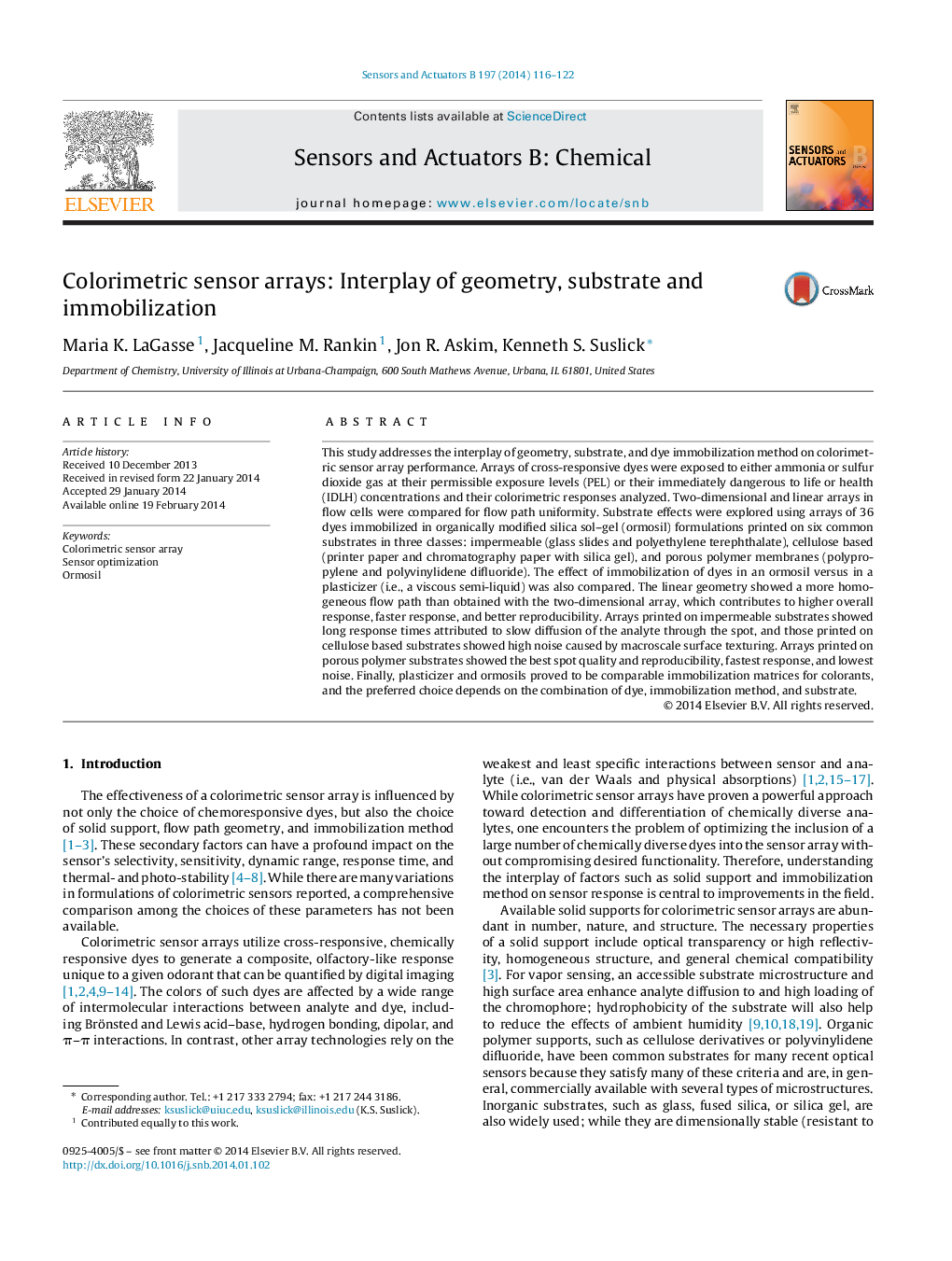| Article ID | Journal | Published Year | Pages | File Type |
|---|---|---|---|---|
| 742061 | Sensors and Actuators B: Chemical | 2014 | 7 Pages |
This study addresses the interplay of geometry, substrate, and dye immobilization method on colorimetric sensor array performance. Arrays of cross-responsive dyes were exposed to either ammonia or sulfur dioxide gas at their permissible exposure levels (PEL) or their immediately dangerous to life or health (IDLH) concentrations and their colorimetric responses analyzed. Two-dimensional and linear arrays in flow cells were compared for flow path uniformity. Substrate effects were explored using arrays of 36 dyes immobilized in organically modified silica sol–gel (ormosil) formulations printed on six common substrates in three classes: impermeable (glass slides and polyethylene terephthalate), cellulose based (printer paper and chromatography paper with silica gel), and porous polymer membranes (polypropylene and polyvinylidene difluoride). The effect of immobilization of dyes in an ormosil versus in a plasticizer (i.e., a viscous semi-liquid) was also compared. The linear geometry showed a more homogeneous flow path than obtained with the two-dimensional array, which contributes to higher overall response, faster response, and better reproducibility. Arrays printed on impermeable substrates showed long response times attributed to slow diffusion of the analyte through the spot, and those printed on cellulose based substrates showed high noise caused by macroscale surface texturing. Arrays printed on porous polymer substrates showed the best spot quality and reproducibility, fastest response, and lowest noise. Finally, plasticizer and ormosils proved to be comparable immobilization matrices for colorants, and the preferred choice depends on the combination of dye, immobilization method, and substrate.
